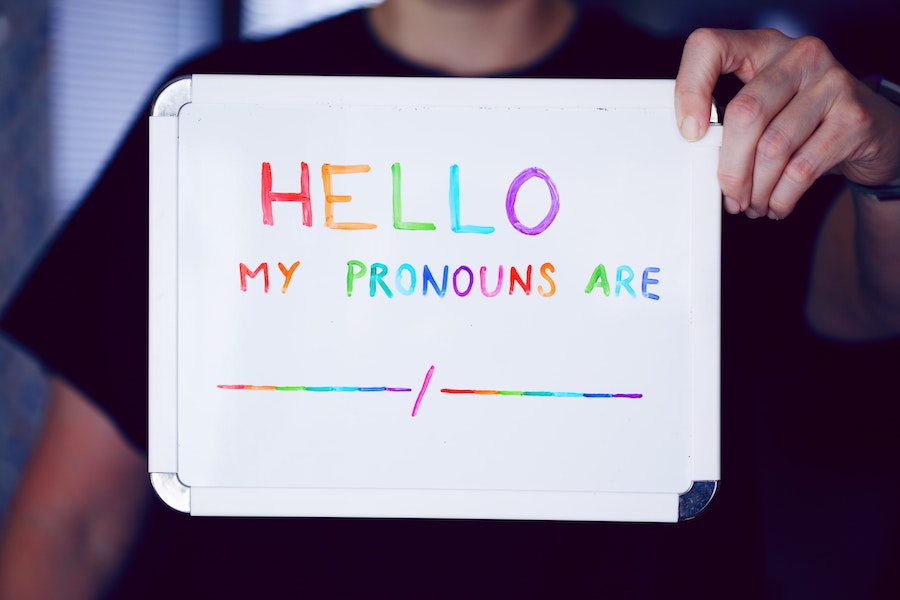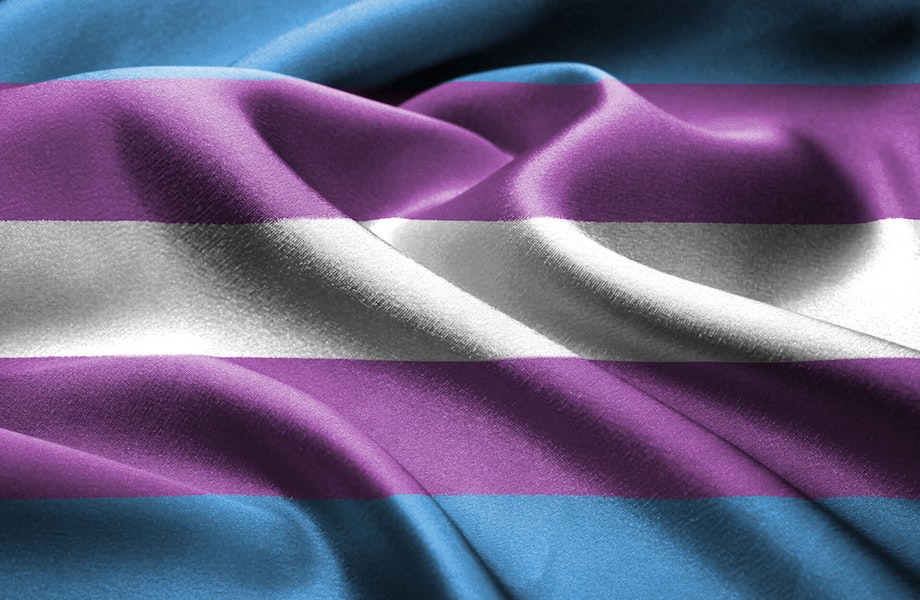In this blog post, we will explore gender diversity. We will also cover the current Standards of Care for those who seek medically supported gender transition. Standards of care refers to the customary practices within a professional field. In the medical field, this includes striving to benefit clients (beneficence) and taking care not to cause harm (nonmaleficence).
I approach this as an ally. This is not an attempt to speak for the trans community. I do draw from my own awkward experiences attempting to find myself. While growing up I found the conventional binary positions of ‘masculine or feminine’ and ‘gay or straight’ limiting and confusing. This was before the liberating experience of discovering more inclusive perspectives regarding gender and sexuality. I also draw from clinical work with a large number of transgender and gender nonconforming (TGNC) clients.
I will turn extensively to medical literature provided by three organizations that significantly influence transgender care. The World Professional Association for Transgender Health (WPATH) has offered standards of care for transition services since 1979. Second, The Endocrine Society represents international endocrinologists offering hormone therapy for transition services. Third, The American Psychological Association (APA), is a significant player because transition often requires involvement of mental health providers. This is a topic of controversy we will address more below.
Terms and abbreviations
Let’s start with some terms to support our discussion. The first time I use each of these terms in the discussion below, I will write them in italics. I do this in order to serve as a reminder that I have provided definitions. Please note that terms used by transgender and gender nonconforming people are as diverse as the community itself. They are also always evolving. Finally, the language of medical literature tends to be updated slowly, lagging far behind TGNC community discourse.
APA
The American Psychological Association
Cisgender
A term for people whose gender identity generally matches the gender they were assigned at birth.
Gender identity
A person’s basic internal sense of being a man, woman, and/or another gender (e.g., gender queer, gender fluid).
Gender expression
Conveyed through appearance (clothing etc), behaviors, and personality styles. These means of expression are often culturally defined as masculine or feminine.
Gender Binary
A classification of gender that recognizes only two distinct, opposite forms: male and female.
Gender Dysphoria (GD)
Distress caused by the discrepancy between one’s experienced gender and one’s assigned gender and/or sex characteristics.
Non-Binary
An umbrella term for gender identities that are neither male nor female. This includes gender identities such as genderqueer, gender-fluid, bigender, agender.
Sex assigned at birth
The sex (male, female, intersex) assigned to a child at birth, most often by a doctor, based on the child’s external anatomy.
TGNC
Transgender and gender nonconforming
Transgender
An umbrella term for people whose gender identity does not match sex assigned at birth. Transgender people may identify as female, male, non-binary, etc.
Transition
An individualized process in which transgender people move from living aligned with the sex assigned at birth to living aligned with their gender identity. Each person’s transition path is unique.
Gender diversity
In the last decade, there has been an explosion of TGNC visibility. Correspondingly, there has been an increased societal recognition that sex assigned at birth and gender identity do not always align. It also includes a recognition that people do not always experience gender according to a ‘male or female’ gender binary. In other words, society is increasingly recognizing the enormous range of human gender diversity.
Spectrum models are increasingly used in an effort to reflect this diversity. People’s gender identities, gender expressions, sex, and romantic and sexual orientations often do not fall neatly into opposing categories. Therefore, the gender spectrum model regards gender as stretching from male to female gender identity and masculine to feminine gender expression. Non-binary refers to gender identities other than male or female. In addition, other gender models still regard the gender spectrum model as too limiting and add additional dimensions.
Read more about gender identity
Transgender is an umbrella term referring to a heterogeneous group of people whose gender identity does not match the sex assigned at birth. Included in this are people who identify as female or male. An example would be a trans man who was assigned female at birth. This also includes people who identify as non-binary. An example could be a genderqueer person who regards themself as a combination of male and female. Another example is an agender person who does not identify with the constructs of male and female. A third example is a genderfluid person whose gender identity or gender expression shifts over time.
Medical transitions and gender dysphoria
Pioneers in trans-affirming care include sexologist physicians Magnus Hirschfeld (1868-1935) and Harry Benjamin (1885-1986). They worked passionately to educate the medical community and public about the enormous diversity within gender and sexuality identities. Both also developed medical services for those wishing to transition. These services have significantly evolved since the time of these pioneers. However, knowledge within the medical community regarding the lived experiences and needs of transgender people who do not identify according to a ‘male’ or ‘female’ gender binary remains limited. Reflecting that, the WPATH Standards of Care (SOC) is limited to the treatment of gender dysphoria, and the focus is primarily on transition services.
Transition following the WPATH SOC requires a diagnosis of gender dysphoria (GD). The necessity of a GD diagnosis for medical transition is controversial. Those in support argue that receiving a diagnosis is necessary for safe care and for coverage by medical insurance within many healthcare systems. Those opposed are concerned that this medicalization and the gatekeeping role of physicians and mental health providers can create unnecessary barriers or stigma.
Clinical practice guidelines
Historically, medical providers often attempted to change a person’s gender identity and gender expression to match sex assigned at birth. Just like attempts to change people’s sexual identities, this approach was unsuccessful and caused enormous harm. Research has thoroughly discredited these ‘conversion therapies.’ As a result, many countries throughout the world are banning them. However, the legislative and educational work is far from done. The development of standards of care and institutional resolutions have been essential in correcting this painful and destructive history.
World Professional Association for Transgender Health Standards of Care
SOC transition protocol
SOC for adults requires well documented gender dysphoria and the capacity for fully informed consent. Informed consent is the process in which a medical provider educates a patient about the risks, benefits, and alternatives of a procedure or intervention. The patient must be competent to make a voluntary decision about whether to undergo the procedure or intervention. The SOC transition protocol includes hormone therapy and gender confirmation surgery. These refer to the use of hormones or surgery, respectively, to alter one’s physical characteristics to align with one’s gender identity.
Puberty suppression in adolescents
SOC for adolescents begins with puberty suppression. ‘Puberty blockers’ work by blocking the hormones testosterone and estrogen that lead to puberty-related secondary sex characteristics. These include breast growth, menstruation, voice-deepening, facial hair, and development of thyroid cartilage (often referred to as an ‘Adam’s apple’). Puberty suppression does not resolve gender dysphoria. It buys time, keeping options open for adolescents. Continued development of unwanted secondary sexual characteristics can trigger depression, anxiety, isolation, self-harm, and suicidality. Puberty suppression can greatly reduce the extreme distress that many gender dysphoric adolescents experience.
Puberty suppression has been used safely for decades in children with medical conditions other than GD, including early onset puberty. This process can continue for years and is fully reversible. Spending a year in the desired gender role, as a real-life experience (RLE), is recommended before proceeding with hormone therapy and gender confirmation surgery. However, research strongly indicates that adolescents motivated by severe GD almost always choose to continue with transition.
SOC recommends considerations for adolescents prior to engaging in medical transitioning. One is that an adolescent does not suffer from psychosocial challenges that interfere with assessment or treatment. Another is that they have adequate family or other support. A third is that they have good comprehension of the impact of medical interventions. If they meet these conditions, then they are eligible for puberty suppression, hormone therapy, and gender confirmation surgery at the respective ages of 12, 16, and 18 years. For those who have had the opportunity to use puberty blockers, gender confirmation surgeries are far simpler.
Access to trans-affirmative medical care
Lack of access to trans‐affirmative mental and physical healthcare is a common barrier for TGNC people. Untreated GD presents significant risks. Due to pervasive experiences of discrimination and violence in many cultures and societies, gender dysphoric adolescents are already highly vulnerable. They exhibit high rates of mental health concerns, isolation, self-harm, and suicide at the onset of a puberty that feels wrong.
Increasingly, access to care is being prioritized over strict adherence to guidelines. WPATH, Endocrine Society, and APA all recognize that flexibility and an emphasis on reducing stigma are important considerations in treatment of TGNC people.
We have now concluded our brief exploration of gender diversity. We covered the current standards of care for those who seek medically supported transition, and potential barriers to care. My wish is that this discussion will encourage you to explore this topic further, especially through the richly diverse voices of TGNC writers. I hope you are inspired to advocate for TGNC legal protections and increased access to trans-affirming medical care.
Are you looking to work through a gender transition of your own or to better understand someone else’s transition? Working with a LGBTQ-affirmative therapist can help. Reach out to myTherapyNYC to learn about our affirming therapeutic services.
How have models of gender (binary, spectrum, or others) in your familial/cultural settings contributed to your personal experiences of gender identity and gender expression? Please join the conversation in the comments below!
- What Do Different Types of Anxiety Have in Common? - September 29, 2022
- Understanding Gender Transitions - June 16, 2022
- What is Experiential Psychotherapy? - March 17, 2022





